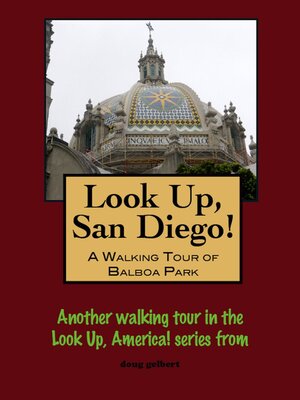
Sign up to save your library
With an OverDrive account, you can save your favorite libraries for at-a-glance information about availability. Find out more about OverDrive accounts.
Find this title in Libby, the library reading app by OverDrive.



Search for a digital library with this title
Title found at these libraries:
| Library Name | Distance |
|---|---|
| Loading... |
There is no better way to see America than on foot. And there is no better way to appreciate what you are looking at than with a walking tour. Whether you are preparing for a road trip or just out to look at your own town in a new way, a downloadable walking tour is ready to explore when you are.Each walking tour describes historical and architectural landmarks and provides pictures to help out when those pesky street addresses are missing. Every tour also includes a quick primer on identifying architectural styles seen on American streets.Land was set aside here for public use in the 1830s and 1,400 acres were legally declared "City Park" in 1868, making San Diego one of America's first towns to have a park. But the scrub mesa of City Park remained completely undeveloped; not the kind of park where you would see joggers and baby strollers on winding paths today but rather the kind of park where you would meet rattlesnakes and coyotes.The first steps towards taming and landscaping City Park took place in 1892 when a botanist named Kate Sessions made a deal to plant 100 trees every year in exchange for 32 acres she could use for her commercial nursery. Sessions introduced a variety of native and exotic plants to the park and many of her trees are still growing. She became known as the "Mother of Balboa Park" but surely even she harbored no dream of what the park would shortly become.To celebrate the completion of the Panama Canal, San Diego staged the Panama-California Exposition in 1915 to announce its geographic position as the first American port of call on the Pacific coast for ships exiting the Panama Canal from the Atlantic Ocean. It was an audacious undertaking for a city with a population of 39,578. Los Angeles and San Francisco were both ten times as large. In fact, no city as small as San Diego had ever attempted to put on a world's fair.The fairgrounds would be in City Park and one of the first tasks organizers undertook was changing the park name. A contest yielded the name of Vasco Núñez de Balboa, the first European to cross Central America and see the Pacific Ocean. The architect for the Exposition came from the East Coast, Bertram Goodhue who was celebrated for his Gothic Revival churches. In California, however, Goodhue re-interpreted historic Spanish Baroque and Spanish Colonial architecture into what became known as the Spanish Colonial Revival Style. Goodhue advocated and it was accepted that all but a handful of structures for the World's Fair would be disposable and were constructed of plaster and wood. The Exposition was so successful it remained open for an extra year and the assembly of Spanish-flavored buildings was so striking and so popular that San Diegans could not tear the fair down completely when it was over.When San Diego put on the California Pacific International Exposition in 1935 many of the original buildings were back in uses as exhibit halls. This time around the fair had a more practical and less visionary motive - jumpstart an economy ravaged by the Great Depression. Still, it was also successful enough to win a year's extension. In the decades to follow there would be no more international get-togethers in Balboa Park and the fair buildings gradually fell into disrepair. Balboa Park, and the historic Exposition buildings, were declared a National Historic Landmark in 1977 and plans were hatched to make many of the "temporary" buildings permanent after so many years.Our walking tour of Balboa Park will begin at its western boundary on 6th Avenue near a statue remembering Kate Sessions and walk along El Prado, the same path used by wide-eyed fair-goers almost a century ago...







